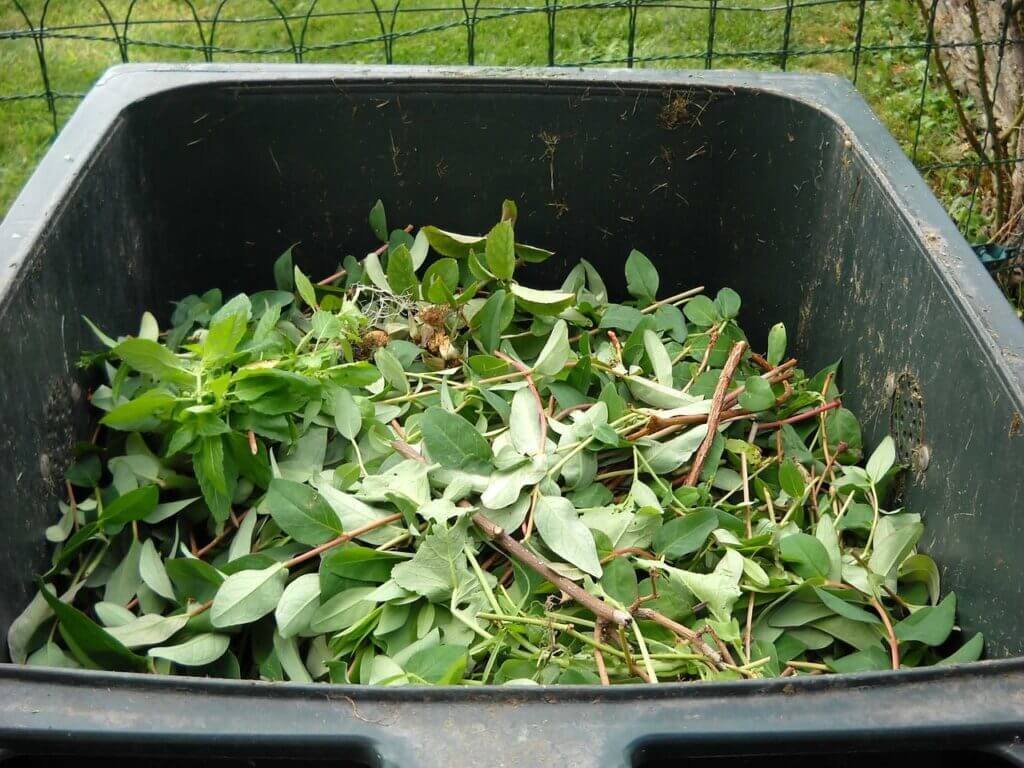Living in a small city space doesn’t mean you have to forfeit the joy and benefits of composting. You might think that without a sprawling backyard, composting is out of the question, but fear not – there are solutions for composting in even the tiniest of urban dwellings. In this article, we’ll explore some creative ways to compost in a small city space, allowing you to reduce waste, nourish your plants, and contribute to a more sustainable future. So, whether you have a cozy balcony, a limited kitchen counter, or a slim windowsill, you’ll find practical tips and tricks to unleash your inner composting enthusiast. With a little creativity, even the most confined spaces can become flourishing havens for composting!

Choosing the Right Composting Method
Consider Composting Techniques
When choosing a composting method, it’s important to consider your specific needs and circumstances. There are various composting techniques available, each with its own advantages and requirements. Some popular options include traditional composting, vermicomposting (composting with worms), and compost tumblers. Traditional composting involves creating a pile of organic waste materials and allowing them to break down naturally over time. Vermicomposting, on the other hand, utilizes worms to speed up the decomposition process. Compost tumblers are rotating bins that provide a convenient way to turn and mix the compost, promoting faster decomposition.
Explore Indoor Composting Methods
Limited space doesn’t have to be a hindrance to your composting efforts. Indoor composting allows you to compost year-round, regardless of the weather conditions outside. There are several indoor composting methods to consider, such as using worm bins, bokashi fermentation, or electric composters. Worm bins, also known as vermicomposting, are compact containers that house a population of worms that consume organic waste and produce nutrient-rich compost. Bokashi fermentation utilizes a special mix of microorganisms to break down organic waste in an airtight container. Electric composters use heat and mechanical action to accelerate the decomposition process, making them ideal for small spaces.
Evaluate Outdoor Composting Options
If you have access to outdoor space, you can explore various outdoor composting options. One popular method is using a compost bin or pile. Compost bins are containers designed to hold and control the composting process. They range from simple open-bottom structures to more advanced units with multiple compartments for different stages of decomposition. Compost piles, on the other hand, are a more informal way of composting where organic waste is stacked directly on the ground. Another option to consider is trench composting, which involves digging a trench, filling it with organic waste, and covering it with soil. This method is particularly useful if you have limited space or want to compost in a discreet manner.
Selecting Appropriate Composting Materials
Identify Organic Waste Items
When it comes to composting, not all waste items are created equal. It’s essential to identify the organic waste items that are suitable for composting. Items such as fruit and vegetable scraps, coffee grounds, tea bags, eggshells, yard trimmings, and shredded paper can all be composted. These materials provide a good mix of carbon and nitrogen, essential elements for a successful composting process. Avoid composting meat, dairy products, oils, and fats, as they can attract pests and cause odors. It’s also important to avoid composting weeds that have gone to seed, as this can spread the weeds to your garden when you use the finished compost.
Avoid Non-Compostable Materials
While it’s essential to know what can be composted, it’s equally crucial to be aware of what should be avoided. Non-compostable materials such as plastics, metals, glass, and synthetic materials should never be added to your compost pile or bin. These materials do not break down and can contaminate the compost, rendering it unusable. Additionally, it’s important to avoid composting pet waste, as it can contain harmful pathogens. Always ensure that the materials you add to your compost pile are organic and free from contaminants.
Balance Carbon-to-Nitrogen Ratios
Maintaining the right balance of carbon (also referred to as browns) and nitrogen (also known as greens) is crucial for successful composting. Carbon-rich materials include dry leaves, straw, wood chips, and shredded paper. Nitrogen-rich materials include kitchen scraps, grass clippings, and fresh plant trimmings. For optimal decomposition, aim for a carbon-to-nitrogen ratio of around 25:1. This balance provides the necessary nutrients for the microorganisms responsible for breaking down the organic waste. Too much carbon can slow down the decomposition process, while too much nitrogen can result in a smelly, slimy pile. Experimenting with different ratios will help you find the right balance for your compost.

Finding Suitable Composting Containers
Evaluate Indoor Composting Containers
When composting indoors, choosing the right container is essential. The container should be compact, well-ventilated, and secure to prevent any odors or pests from escaping. Worm bins are an excellent choice for indoor composting as they come in various sizes and designs to suit different spaces. Look for worm bins with a lid to keep pests out and a spigot to drain excess liquid, known as “worm tea,” which can be used as a nutrient-rich liquid fertilizer. If you prefer a more hands-off approach, consider electric composters, which are self-contained units that automate the composting process. Electric composters provide convenience and odor control in small spaces.
Explore Outdoor Composting Bins
For those with outdoor space, using a compost bin is a popular and practical option. Compost bins come in various shapes, sizes, and designs, allowing you to choose one that suits your needs and space availability. Look for sturdy bins made from durable materials that can withstand the elements. Consider bins with multiple compartments, as this allows you to separate compost in different stages of decomposition. Some bins come with features such as built-in aeration systems or tumbling mechanisms, which facilitate air circulation and mixing of the compost. These features help speed up the decomposition process and make managing your compost easier.
Consider Vermicomposting Solutions
Vermicomposting, or composting with worms, is a versatile method that can be done both indoors and outdoors. If you prefer to compost outdoors, consider using a worm tower or worm pit. These are essentially containers buried in the ground, where worms can thrive and process organic waste. Worm towers are vertical containers with holes for worms to access the waste from the surface. Worm pits, on the other hand, are larger excavations in the ground filled with organic waste and worms. For indoor vermicomposting, worm bins are the go-to solution. These bins can be compact and easy to manage, making them an ideal choice for small spaces.
Managing Odor and Pests
Control Odor in Indoor Composting
Odor can be a common concern when composting, especially in confined spaces. However, with the right techniques, you can minimize or eliminate odors altogether. One way to control odor in indoor composting is by using a well-designed worm bin or electric composter that effectively seals in odors. Additionally, avoid adding strong-smelling items such as meat, dairy, or oily foods to your compost. These items are more likely to produce unpleasant odors. Another effective method to control odor is regularly adding a layer of browns (carbon-rich materials) like dry leaves or shredded paper to your compost. Browns help absorb excess moisture and reduce odor-causing bacteria.
Implement Odor-Reducing Techniques
In addition to using proper containers and avoiding odor-producing materials, there are other techniques you can implement to further reduce odors. Turning or mixing the compost regularly helps to aerate it, preventing the build-up of anaerobic conditions that can lead to unpleasant smells. If you notice a strong odor, it may indicate that the compost is too wet. In this case, add more browns to absorb the excess moisture and improve airflow. You can also sprinkle a thin layer of baking soda on top of the compost to neutralize odors. Lastly, ensure that your compost is well-balanced in terms of carbon-to-nitrogen ratio, as an imbalance can lead to foul smells.
Prevent Pest Infestations
Pests can pose a challenge when composting, but there are measures you can take to prevent infestations. When composting indoors, make sure your container is properly sealed to prevent pests from entering. Regularly inspect your compost for any signs of pests and take immediate action if detected. If you notice fruit flies, which are common in compost, cover your compost with a layer of browns or place a fine mesh screen over the container’s openings. This will prevent flies from accessing the compost and breeding. If composting outdoors, choose a location away from your house and other potential pest attractants. Regularly turning and mixing the compost will also discourage pests and keep the composting process healthy.

Maintaining the Composting Process
Understand the Composting Process
To successfully maintain a compost, it’s important to understand the composting process. Composting is a natural decomposition process in which microorganisms, such as bacteria and fungi, break down organic waste into nutrient-rich humus. These microorganisms require the right conditions to thrive, including oxygen, moisture, and the correct balance of carbon and nitrogen. As the organic materials decompose, they generate heat, which is an indicator that the process is progressing as desired. Regularly monitoring and adjusting these factors will ensure a healthy composting process.
Monitor Moisture Levels
Moisture is a critical factor in composting. If the compost is too dry, decomposition slows down, while excessive moisture can lead to a smelly, anaerobic compost pile. The ideal moisture level is similar to a damp sponge, where the compost feels moist but not sodden. To maintain proper moisture levels, regularly check the compost’s moisture by squeezing a handful of the mixture. If it feels too dry, add water to moisten it. Conversely, if it feels too wet, add more dry carbon-rich materials, such as shredded paper or dry leaves, to absorb the excess moisture. Strive to maintain a moist but well-aerated compost throughout the process.
Turn and Mix the Compost
Turning and mixing the compost is an essential step in maintaining the composting process. This process helps to introduce oxygen, distribute moisture evenly, and accelerate decomposition. Regularly turning the compost ensures that all materials are exposed to the microorganisms responsible for breaking them down. You can turn the compost by using a pitchfork or shovel to move the outer layers to the center. Mixing the compost also helps to balance carbon and nitrogen ratios, which is essential for optimal decomposition. Aim to turn and mix the compost at least once a week or as needed to maintain a healthy and active composting process.
Ensuring a Successful Compost
Allow Sufficient Time for Decomposition
Composting is not an overnight process, and patience is key to achieving a successful compost. The time required for decomposition depends on various factors, including the composting method, the materials used, and environmental conditions. Generally, it takes between six months to two years for compost to fully mature. During this time, make sure to regularly monitor and maintain the compost as needed. Factors such as turning the pile, monitoring moisture levels, and maintaining the right carbon-to-nitrogen ratio will help speed up the decomposition process. By allowing sufficient time for decomposition, you will be rewarded with nutrient-rich compost that can enrich your soil and support healthy plant growth.
Achieve Proper Temperature and Aeration
Temperature and aeration play vital roles in the composting process, as they create an environment in which microorganisms can thrive and break down the organic materials. The ideal temperature range for composting is between 110°F and 160°F (43°C to 71°C). This temperature range promotes the growth of thermophilic microorganisms, which are responsible for rapid decomposition. Regularly monitoring the temperature using a compost thermometer will help ensure that the compost remains within the desired range. Additionally, maintaining proper aeration through regular turning and mixing of the compost will provide oxygen to the microorganisms and prevent the compost from becoming compacted.
Testing and Using Finished Compost
Once your compost has reached a dark, crumbly texture and has a pleasant earthy smell, it is considered finished and ready for use. To ensure that the compost is fully matured and free from any potential contaminants, you can conduct a simple germination test. Take a sample of the finished compost and plant a few seeds in it. If the seeds germinate and grow well, it is an indication that the compost is safe and ready for use in your garden. Use the finished compost as a nutrient-rich soil amendment, mixing it into your garden beds or potting mixes. This compost will help improve soil structure, provide essential nutrients, and support healthy plant growth.
Dealing with Space Constraints
Utilizing Vertical and Space-Saving Composting Methods
When space is limited, it’s crucial to utilize vertical and space-saving composting methods. Vertical composting involves using tall containers or structures that maximize the use of vertical space. One popular method is using composting towers or bins that stack multiple levels on top of each other. These bins allow you to compost a larger volume of organic waste in a smaller footprint. Another space-saving option is utilizing composting bags or sacks that can be hung or attached to vertical surfaces such as walls or fences. These bags provide a compact and portable solution for composting in small spaces.
Creating or Repurposing Composting Areas
If you have some outdoor space, you can create or repurpose areas specifically for composting. One option is to designate a corner of your yard or garden as a composting area. Clear the area of vegetation, create a compost bin or pile, and ensure adequate drainage. If you have a small balcony or patio, consider repurposing available containers, such as large buckets or bins, to create a composting area. Make sure these containers have proper drainage and are securely covered to prevent any odors or pests from escaping. By utilizing available spaces creatively, you can successfully compost even in limited areas.
Collaborating with Community Gardens or Composting Programs
If space constraints prevent you from composting on your property, consider collaborating with community gardens or composting programs in your area. Many cities and neighborhoods have community gardens that welcome contributions of organic waste. These gardens often have designated composting areas where you can drop off your food scraps or yard trimmings. Additionally, check if your local municipality has composting programs or initiatives in place. They may provide collection services for organic waste or offer drop-off locations where you can contribute to the composting efforts of the community. Collaborating with others allows you to contribute to composting efforts even if you have limited space.
Composting in Apartments and Condos
Exploring Aerobic Composting Methods
Composting in apartments and condos may seem challenging, but there are several aerobic composting methods that can be utilized. Aerobic composting relies on the presence of oxygen to facilitate the decomposition process. One suitable method is the use of a compost bin specifically designed for indoor use. These bins are often compact and odor-resistant, making them ideal for small living spaces. Another option is utilizing composting systems that use natural airflow, such as composting tumblers or composting bags. These systems allow for aeration and help control odors, making them suitable for composting in apartments and condos.
Using Small-Scale Indoor Composting Systems
Small-scale indoor composting systems are a great solution for composting in compact living spaces. These systems are designed to handle a limited amount of organic waste, making them perfect for apartments and condos. Popular options include worm bins or vermicomposting systems, bokashi fermentation bins, or small electric composters. Worm bins utilize worms to process organic waste, while bokashi fermentation relies on anaerobic microorganisms to break down the waste. Electric composters automate the composting process, making them hassle-free for those with limited time or space. Regardless of the system you choose, small-scale indoor composting allows you to reduce your waste and produce nutrient-rich compost.
Participating in Municipal Composting Programs
Municipal composting programs provide an excellent opportunity for apartment and condo dwellers to compost their organic waste. Many cities now offer curbside collection of food scraps and yard waste, which are then brought to centralized composting facilities. Contact your local municipal authorities to inquire about their composting programs and whether they cover your specific area. If curbside collection isn’t available, they may provide drop-off locations where you can bring your compostable materials. Participating in municipal composting programs allows you to divert organic waste from landfills and support the wider community’s sustainability efforts.
Incorporating Composting in Balconies and Patios
Choosing Suitable Container Composting Methods
Balconies and patios can be transformed into productive composting areas with the use of suitable container methods. Container composting provides an organized and contained space for composting in small outdoor areas. Choose containers that fit your balcony or patio space, ensuring they have proper drainage and a secure lid to prevent any pests or odors. Consider using compost tumblers, which can easily be turned and mixed, promoting faster decomposition. Additionally, you can use large pots or fabric bags specifically designed for composting. These containers provide a compact and portable solution for composting in balcony and patio settings.
Implementing Balcony or Patio Vermicomposting
Vermicomposting can be a practical and space-efficient method for composting on balconies and patios. Worms are excellent at processing organic waste, and they can be easily accommodated in compact vermicomposting systems. Consider using worm towers or vertical worm bins specifically designed for balcony or patio use. These containers often have a small footprint and provide an efficient way to compost in limited spaces. By implementing balcony or patio vermicomposting, you can not only compost your organic waste but also enjoy the benefits of nutrient-rich worm castings for your plants.
Designing Compact Composting Systems
Compact composting systems are ideal for balconies and patios where space is at a premium. These systems utilize vertical space or incorporate multiple composting stages into a single container. One option is a tiered composting system, where bins or trays are stacked vertically, allowing for a larger volume of compost in a compact footprint. Another option is a multi-stage composting system that integrates different composting methods in one container. For example, you can have a vermicomposting section at the top, followed by a regular composting section below. Designing a compact composting system tailored to your balcony or patio space ensures efficient use of available area while reducing organic waste.
Connecting with Local Resources and Support
Researching Local Composting Guidelines
Every locality may have specific guidelines or regulations regarding composting. It’s essential to research and familiarize yourself with your local composting guidelines to ensure compliance. These guidelines often specify what can and cannot be composted, as well as any restrictions on composting methods or the use of compost in certain areas. Understanding local regulations helps you compost responsibly and ensures that your efforts align with the community’s composting goals. Local municipalities or environmental organizations are good sources of information for composting guidelines specific to your area.
Joining Composting Groups or Associations
Joining composting groups or associations can provide valuable support and knowledge-sharing opportunities. These groups bring together individuals with a shared interest in composting, creating a network of experienced composters who can offer guidance and advice. Look for local composting groups or associations in your area, either online or through community organizations. These groups often organize workshops, events, or even composting initiatives, which provide hands-on learning experiences. By joining composting groups, you can connect with like-minded individuals, exchange ideas, and gain valuable insights into successful composting practices.
Attending Workshops or Training Sessions
Attending workshops or training sessions is an excellent way to expand your composting knowledge and learn from experts in the field. Many municipalities, gardening centers, or environmental organizations offer workshops or training sessions on composting. These sessions cover a wide range of topics, including composting methods, troubleshooting common issues, and utilizing finished compost effectively. Participating in these educational opportunities allows you to enhance your composting skills, gain practical tips, and stay up-to-date with the latest composting techniques. By investing time in learning, you can become a knowledgeable and confident composter.
In conclusion, composting in a small city space is entirely possible with the right techniques, materials, containers, and support systems. Consider your specific needs and circumstances when choosing a composting method, whether it’s traditional composting, vermicomposting, or using compost tumblers. Identify suitable organic waste items while avoiding non-compostable materials and maintaining balanced carbon-to-nitrogen ratios. Evaluate different composting containers, whether for indoor or outdoor use, and manage odor and pest issues effectively. Understand the composting process, monitor moisture levels, and turn and mix the compost regularly. Allow sufficient time for decomposition, achieve proper temperature and aeration, and test and use the finished compost. Explore innovative ways to deal with space constraints, such as vertical composting methods or collaborating with local composting programs and community gardens. Implement composting solutions in apartments and condos, balconies and patios, and connect with local resources and support through researching guidelines, joining groups, and attending workshops. With these comprehensive strategies, you can successfully compost in small city spaces and contribute to a more sustainable environment.


